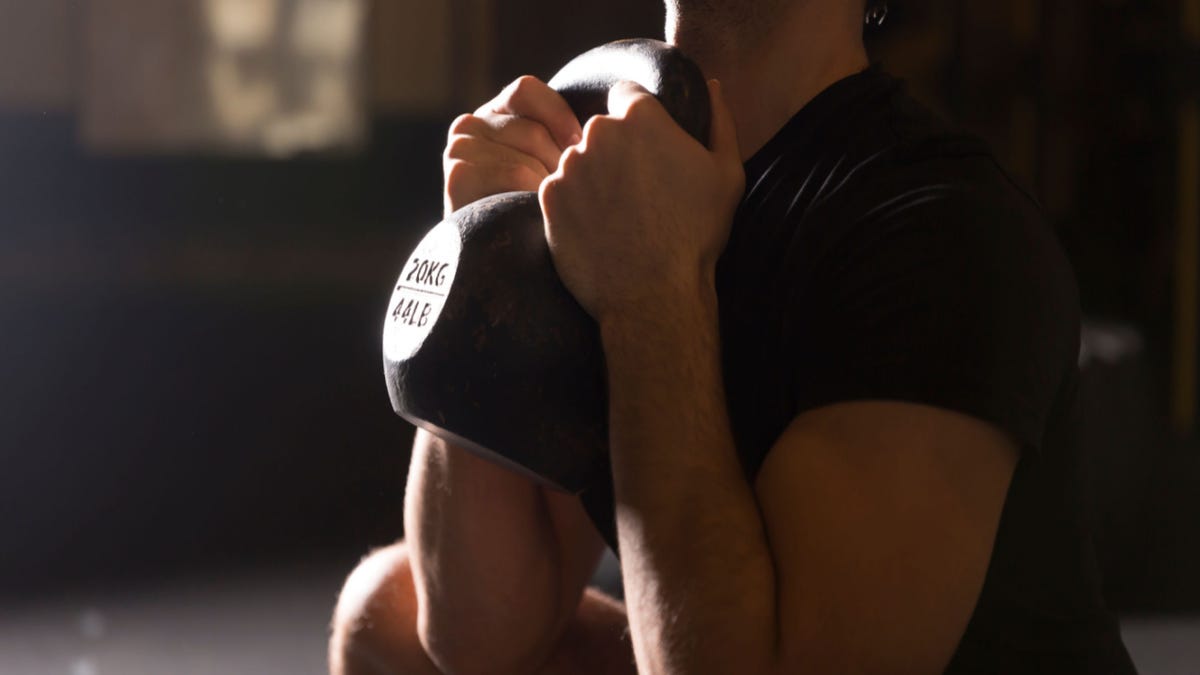These Exercises Actually Get Easier When You Add Weight
As a beginner to strength training, I’m sure you’ve heard the advice (from me, even!) to start with light weights or even no-weight exercises, and work up from there. While this is good advice in general, sometimes we get...


Photo: Nadir Keklik (Shutterstock)
As a beginner to strength training, I’m sure you’ve heard the advice (from me, even!) to start with light weights or even no-weight exercises, and work up from there. While this is good advice in general, sometimes we get stuck on the easy version of an exercise, not realizing that adding weight can actually make it easier.
This post was inspired by our managing editor, Meghan Walbert, telling me that she tried some goblet squats after reading a post of mine that mentioned them. “It is weird how much more stable a goblet squat feels versus an air squat,” she said. And she’s right.
Goblet squats
In a goblet squat, you’re bringing your butt down toward the floor by bending your knees—just like an air squat, but you’re holding a weight in front of your chest while you do it.
The weight does make your legs work a little bit harder as you’re standing up, but you might be surprised, as Meghan was, at how it makes balancing easier. A squat requires you to stick your butt behind you, and the weight in front counterbalances that a bit. Goblets are a great way to begin adding weight to squats (compared to barbell front or back squats, although we’ll discuss those in a moment). They just make it so much easier to keep good positioning on the way down and the way up.
The weight also subtly encourages you to keep your core braced, which helps you to transfer force from your legs through your torso—a habit that will pay off in core strength and in your ability to eventually lift heavier weights.
Pistol squats
A pistol squat is a notoriously difficult move. It’s just an air squat, or a goblet squat, done with one leg. (You stick your other leg out in front of you, hence the resemblance to a pistol.)
If you can just barely manage a pistol, you would think weighted pistols must be tougher. But, like goblet squats, the weight acts as a counterbalance and assists you in keeping a good body position. If you can do a pistol unweighted, you can probably do one with at least a five or 10-pound dumbbell already.
And if you’re working toward your first pistol, start incorporating weights in the exercises you’re already doing. For example, if you’re practicing partial pistols (only squatting down halfway), hold a dumbbell while you do them and see if that helps.
Kettlebell swings
Kettlebell swings are one of the classic kettlebell moves for beginners and advanced folks alike. But I’ve noticed that people often have difficulty moving past the beginner stage when they use light weights.
That’s because a kettlebell swing, done properly, uses the powerful muscles of your hips to move the bell. If you use a heavy kettlebell, the only way to move it effectively is to give it some oomph with your hips. But if you start with a very light bell, the bell isn’t giving you any feedback about whether you’re doing it right, so you end up scrutinizing your form and wondering if you’re doing it right. Pick up a heavier bell—like, 50 pounds instead of 10—and you can almost teach yourself.
Front squats
Front squats, with a barbell, are notoriously tough to get used to. Once you figure out the proper shoulder and wrist positioning, they’re really not so bad.
But you’ll never figure that out if you’re practicing with a broomstick or one of those PVC pipes that every weightlifting gym has in the corner. An actual barbell, even an empty one, has some weight to it that allows it to sink down onto your shoulders. If you’re strong, you’ll probably need to put some extra weight on the bar to get it to feel comfortable. Then you can start learning how to really do the move.
Anything you’re practicing with a broomstick
Let’s talk about those broomsticks, actually. It’s fine to pick one up when you’re first wondering exactly what a lift is even supposed to look like. I know I’m not the only person who practiced squats, deadlifts, snatches, even overhead press with a broomstick at home before giving it a try at the gym.
But once you have a sense of what the move is supposed to look like, get yourself a real bar (or at least a pair of dumbbells) as soon as you can. It really just moves differently. After all, there’s no point to perfecting your back squat with a broomstick when the same squat with a loaded bar is going to be so different.
Anything you’re doing for reps
When it comes to bodyweight movements like pushups and pullups, we often think about how many we can do, rather than how heavy we can do them. And that’s fine, if you’re training for something like a military push-up test.
But if you’re training for strength, you probably want to add weight when you can. You don’t need to wait until you’re doing a million reps to start adding weight; once you’re up around five or 10 you can probably start seeing benefits from doing at least some of these moves with weight.
For example: it’s often easier to add weight to your pullups than to do more reps. And if pushups are your thing, consider doing some bench press with a barbell or a pair of dumbbells rather than only doing pushups endlessly. Building your strength with weight will help you do more reps of the unweighted kind, so train both ways if you can.

 BigThink
BigThink 
































